
|
|
|
|
|
|
Classic Bikes
Custom Bikes
Individual
Racing Bikes AJP
AJS
Aprilia
Ariel
Avinton / Wakan
Bajaj
Benelli
Beta
Bimota
BMW
Brough Superior
BRP Cam-Am
BSA
Buell / EBR
Bultaco
Cagiva
Campagna
CCM
CF Moto
Combat Motors
Derbi
Deus
Ducati
Excelsior
GASGAS
Ghezzi Brian
Gilera
GIMA
Harley Davidson
Hero
Highland
Honda
Horex
Husaberg
Husqvarna
Hyosung
Indian
Jawa
Kawasaki
KTM
KYMCO
Laverda
Lazareth
Magni
Maico
Mash
Matchless
Mondial
Moto Guzzi
Moto Morini
MV Agusta
MZ / MuZ
NCR
Norton
NSU
Paton
Peugeot
Piaggio
Revival Cycles
Roland Sands
Royal Enfield
Sachs
Sherco
Sunbeam
Suzuki
SWM
SYM
Triumph
TVS
Ural
Velocette
Vespa
Victory
Vincent
VOR
Voxan
Vyrus
Walt Siegl
Walz
Wrenchmonkees
Wunderlich
XTR / Radical
Yamaha
Zero
Video
Technical
Complete Manufacturer List
|
|
| . |
Vespa 98, 1946 - The first Vespa. It was powered by a 98 cc engine that delivered 3.2 bhp at 4,500 rpm with a top speed of 60 km/h. It was in production for two years: in 1946 vehicles no. 1 to no. 2,464 were produced, and no. 2,465 to no. 18,079 in 1947.
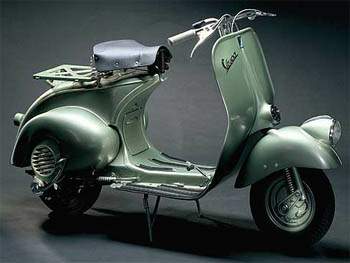
Vespa 125, 1948 - The first Vespa 125 cc. It differed from the 98 not only in engine size, but also for the introduction of rear suspension; the front suspension was also modified.

Vespa 125, 1953 - This marked the first important change to the engine: bore, stroke and timing gear were modified. Power output increased to 5 bhp at 5,000 rpm, and top speed to 75 km/h. The design of the fairing at the rear was also new.
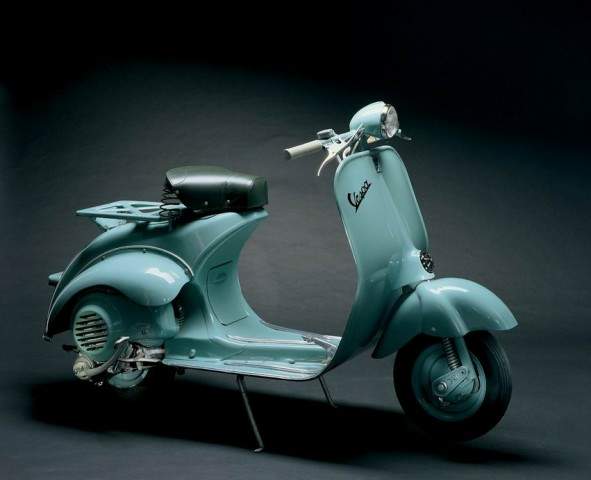
Vespa 125 U, 1953 - The "Utility" version with spartan styling, which sold at 20,000 lire less than the more modern 125. The headlamp appeared high up on the handlebar for the first time in Italy (it had already been introduced on a number of exported models).
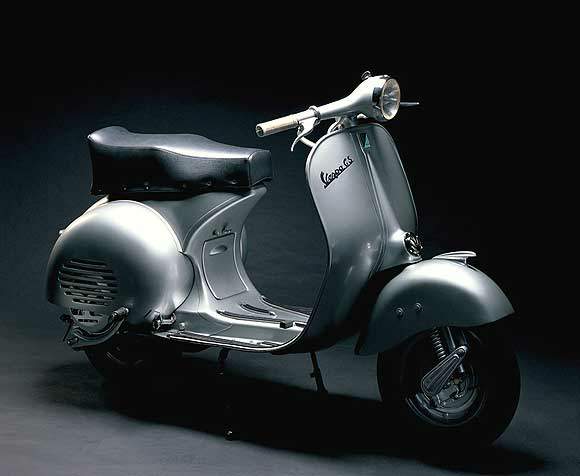
Vespa 150 GS, 1955 - Experts called it "the most popular, imitated and remembered model". There were numerous innovations: the 150 cc engine, 4-speed gearbox, standard long saddle, "faired" handlebar-headlamp unit, wheels with 10" tyres. This Vespa could reach 100 km/h. The design also changed, with a much more aerodynamic body.
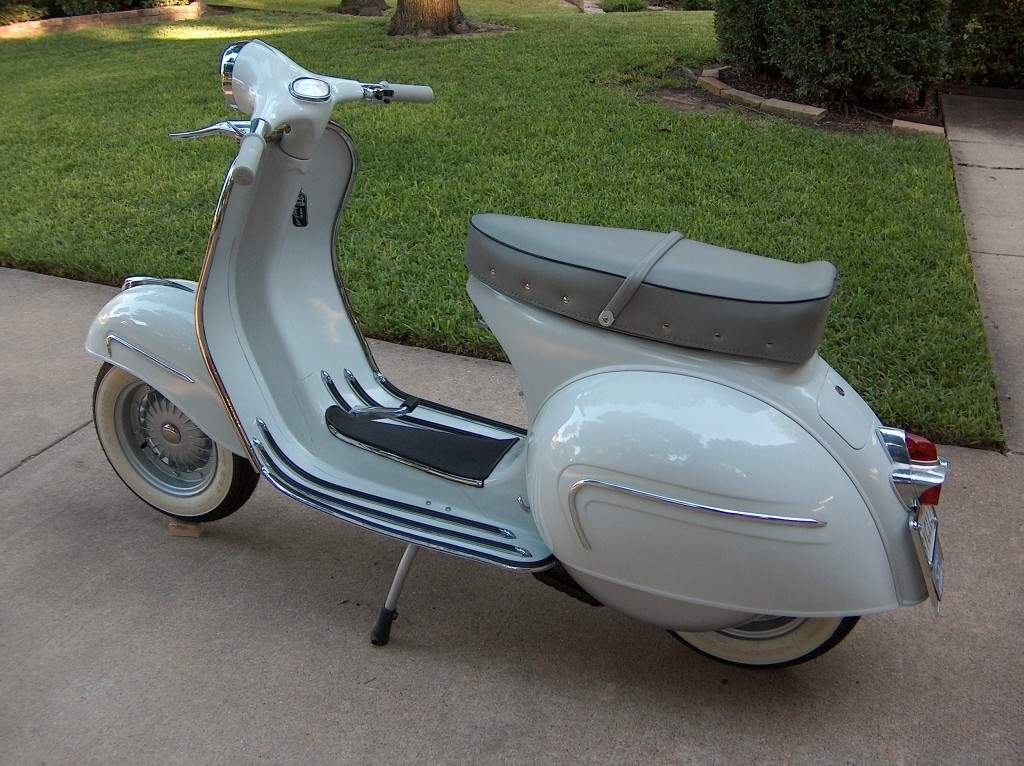
Vespa 160 GS, 1962 - This was born to continue the market success of the first GS, with a completely new design. The exhaust silencer, carburettor and suspension were also new. The power output was 8.2 bhp at 6,500 rpm.
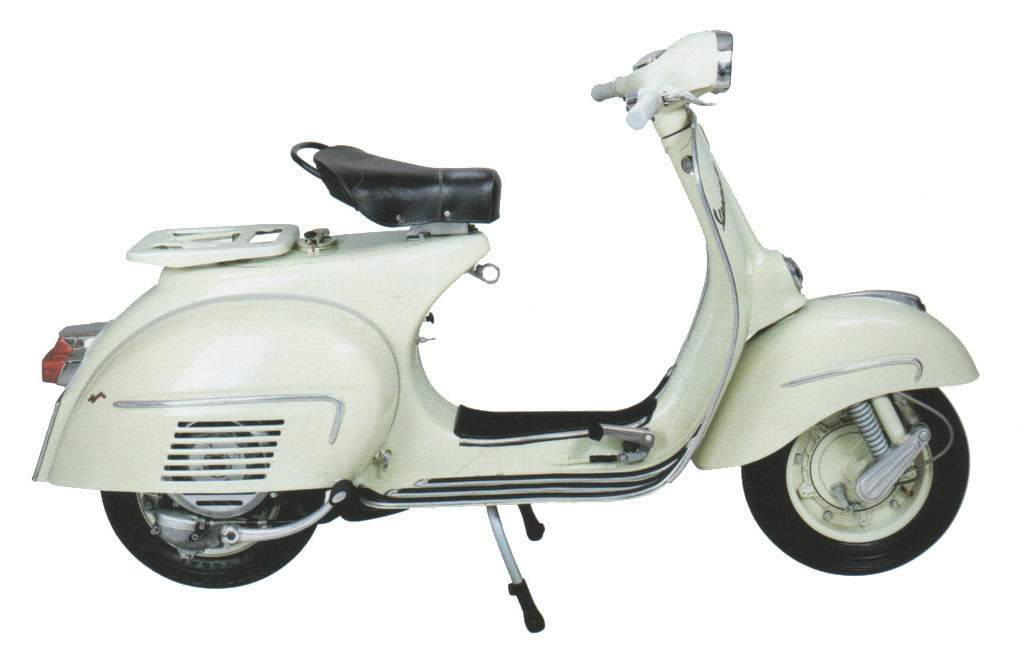
Vespa 150 GL, 1963 - Another new design for what has been called "one of the best-looking Vespas produced by Piaggio designers". The handlebar, trapezoid headlamp, front mudguard and trimmed-down rear lids were all new.
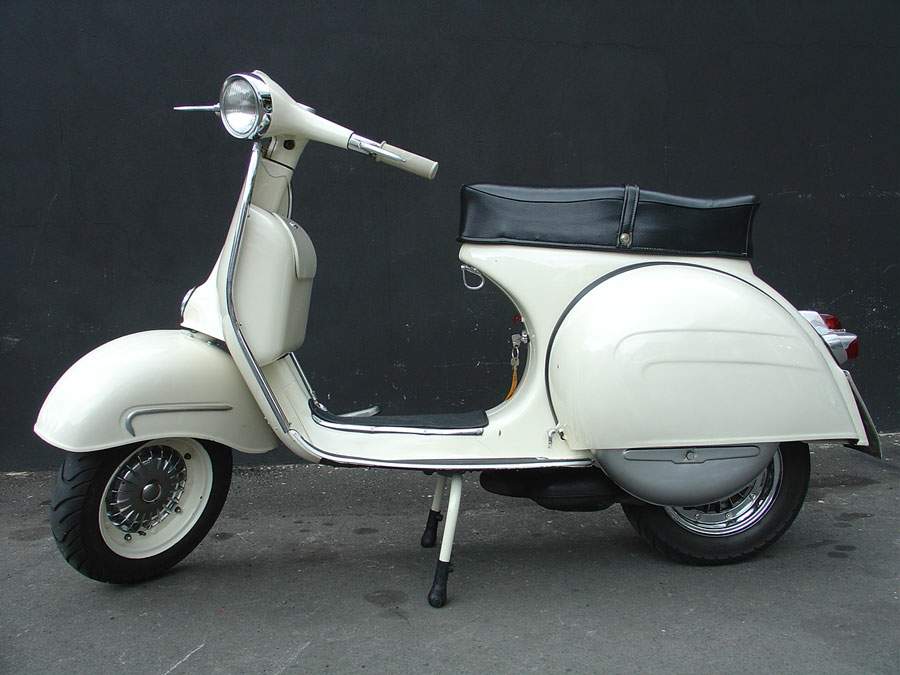
Vespa 50, 1964 - The first Vespa 50 cc, created to exploit the new Italian Highway Code, which made a number plate obligatory on larger engines. Extremely versatile and reliable, the engine featured a new layout, with the cylinder inclined 45° instead of horizontal. It was the last design to leave Corradino D'Ascanio's drawing board.
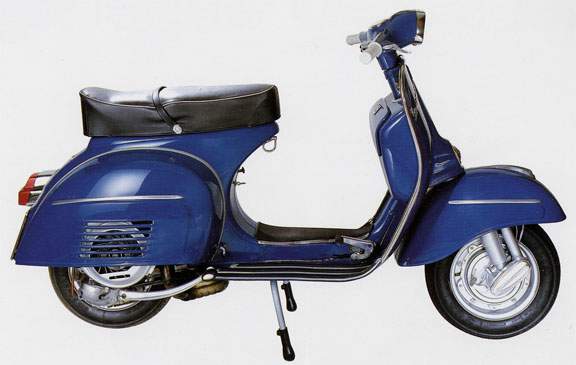
Vespa 180 SS, 1965 - It marked a new milestone in the growth of the engine (181.14 cc), with 10 bhp for a top speed of 105 km/h. The 180 SS (Super Sport) replaced the glorious GS 150/160 cc. Piaggio modified the front cowling, making it more aerodynamic and significantly improving comfort, handling and roadholding.
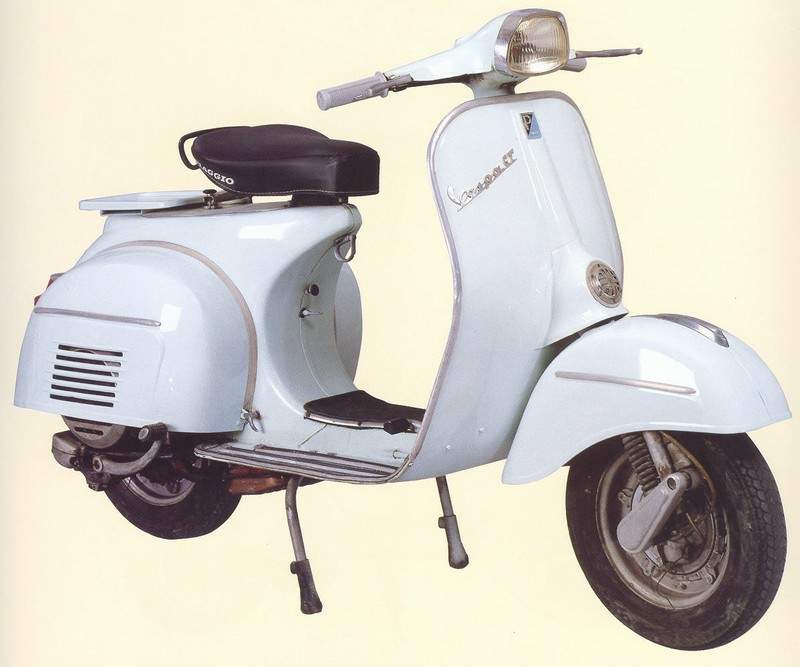
Vespa 125, 1966 - Unofficially known as the "new 125", it featured radical innovations in the design, frame, engine (inclined 45°) and suspension.
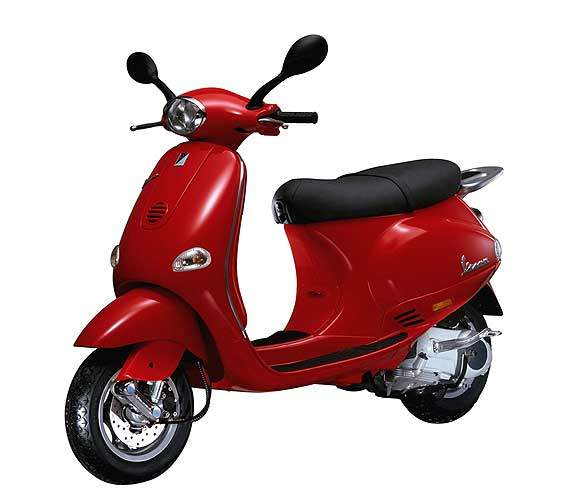
Vespa Super Sprint 90, 1966 - A special series derived from the Vespa 50/90 cc and the "new" 125, the hold-all was positioned between the saddle and the handlebar for a more "laid-back" riding style. The handlebar was narrow and low, and the mudguard and cowling were streamlined. With an engine capacity of only 90 cc, it could do 93 km/h.
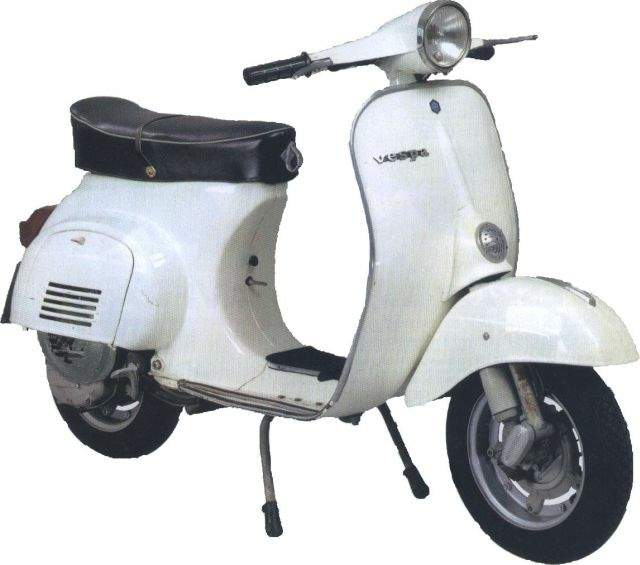
Vespa 125 Primavera, 1968 - Together with the subsequent PX version, it was the most durable version of the Vespa. It derived from the "new" 125, but with considerable differences in the engine, which raised the top speed by 10 km/h. Great attention was paid to details, which included the classic, practical bag hook.
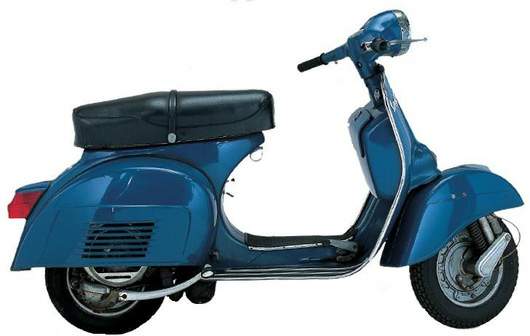
Vespa 180 Rally, 1968 - With this new vehicle, Piaggio extended the rotary timing fuel feed system to its entire production. The engine was new, the front headlamp new and more powerful, the frame, derived from the Vespa 150 Sprint, narrower and more aerodynamic than that of the Super Sport.

Vespa 50 Elestart, 1970 - It featured the great novelty of electric ignition, but the design was also completely revised and embellished compared to the 50 Special.
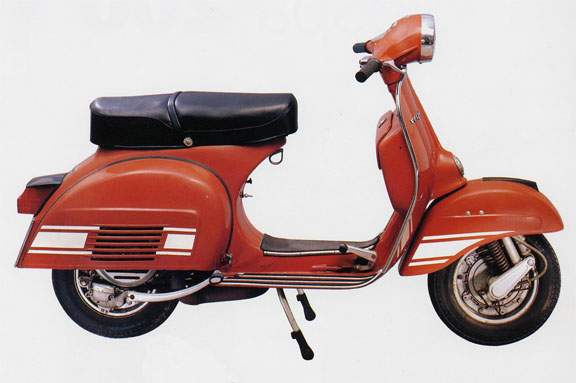
Vespa 200 Rally, 1972 - The Vespa with the largest engine. This model, with 12.35 bhp at 5,700 rpm, could reach 116 km/h.
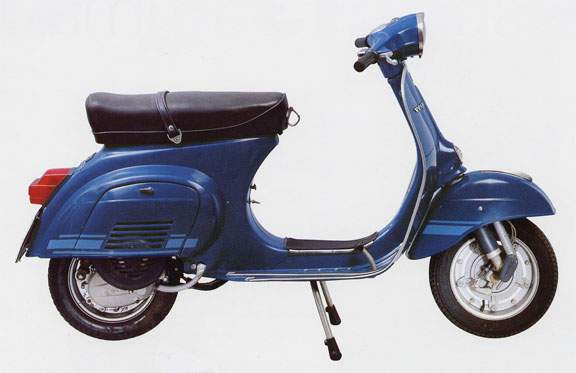
Vespa 125 Primavera ET3, 1976 - The name stood for "Electronic 3 intake ports", and included important changes to the engine, which had more power and sparkle. Even the styling was changed from the standard Primavera (which remained in the range).
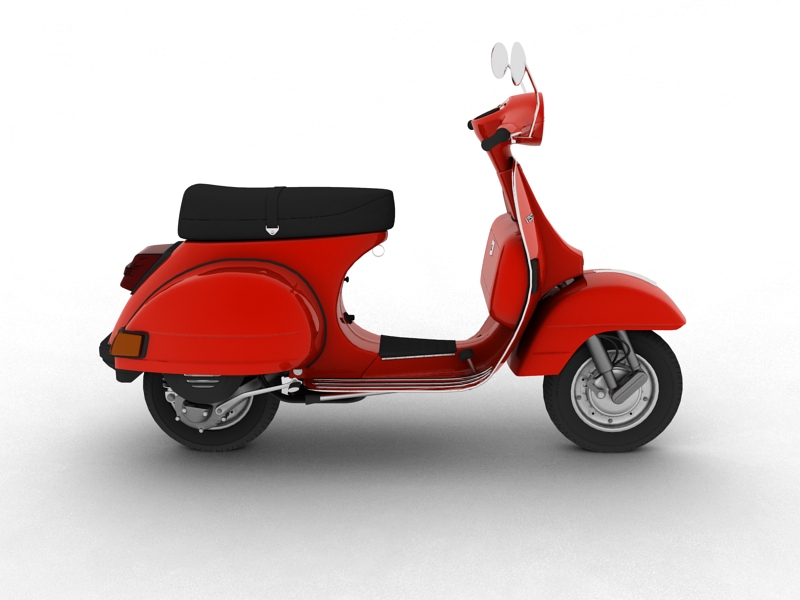
.Vespa P 125 X, 1978 - The "PX" marked a new step forward in styling (the bodywork was completely redesigned) and performance. The hold-all was positioned behind the cowling. The same year the P 200 E also appeared, which could be equipped with separate lubrication and direction indicators incorporated in the body. Three years later the PX 150 E was launched, with performance halfway between the two models.
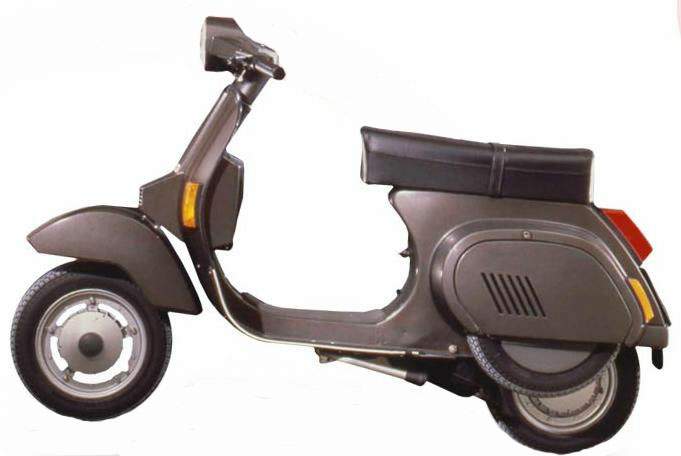
Vespa PK 125, 1983 - This replaced the Vespa Primavera (standard and ET3), which remained in production with the "Classic" body for the Japanese market, where it was the best-selling Western two-wheeler vehicle. The styling was new, and the PK body was completely different from that of previous scooters, because the welds of the body no longer overlapped but were integral.
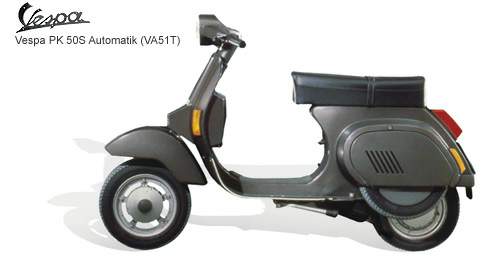
Vespa PK 50, 1983 - Substantially identical to the PK 125, it appeared in two models, PK 50 and PK 50 S, both with 4-speed gearbox and electronic ignition.

Vespa PK 125 Automatic, 1984 - An automatic transmission was introduced on the Vespa, probably the most radical change (at least for the driver) since 1946. The presence of the automatic transmission was emphasised by the absence of the brake pedal, which was replaced by a lever on the left handlebar (which did not have to control the clutch as that was automatic). It was also available with automatic oil-petrol mixer and electric ignition. The following year the Vespa PK 50 Automatic was launched.
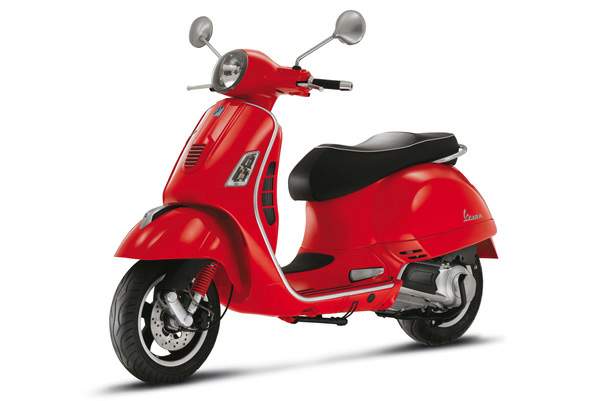
Vespa T 5 Pole Position, 1985 - The T 5 was the "extra-sporty" version of the PX series. With a new engine, aluminium cylinder and 5 intake ports, but the design was also new, particularly at the rear and around the front headlamp which incorporated an aggressive dome with a small Plexiglas windscreen. A spoiler was added on the cowling.
Vespa 50 N, 1989 - The changes to the Italian Highway Code meant that 50 cc vehicles were no longer bound by the 1.5 bhp limit, and Piaggio presented a new small Vespa with improved performance (over 2 bhp at 5,000 rpm), and new, smoother styling. A "Speedmatic" automatic version was also launched.

Vespa ET4 125cc, 1996 - The "new generation Vespa" launched on the 50th anniversary. A completely new project, it is the first Vespa ever powered by a 4-stroke engine. The Vespa ET is equipped with a front disk brake and an automatic CVT gearbox.
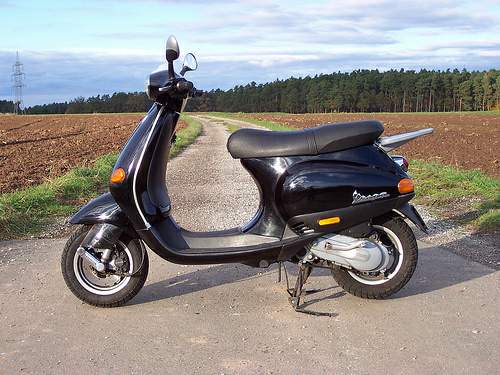
Vespa ET2 50cc, 1997 - Same as the ET4 125, but with a 50cc 2-stroke catalysed engine.
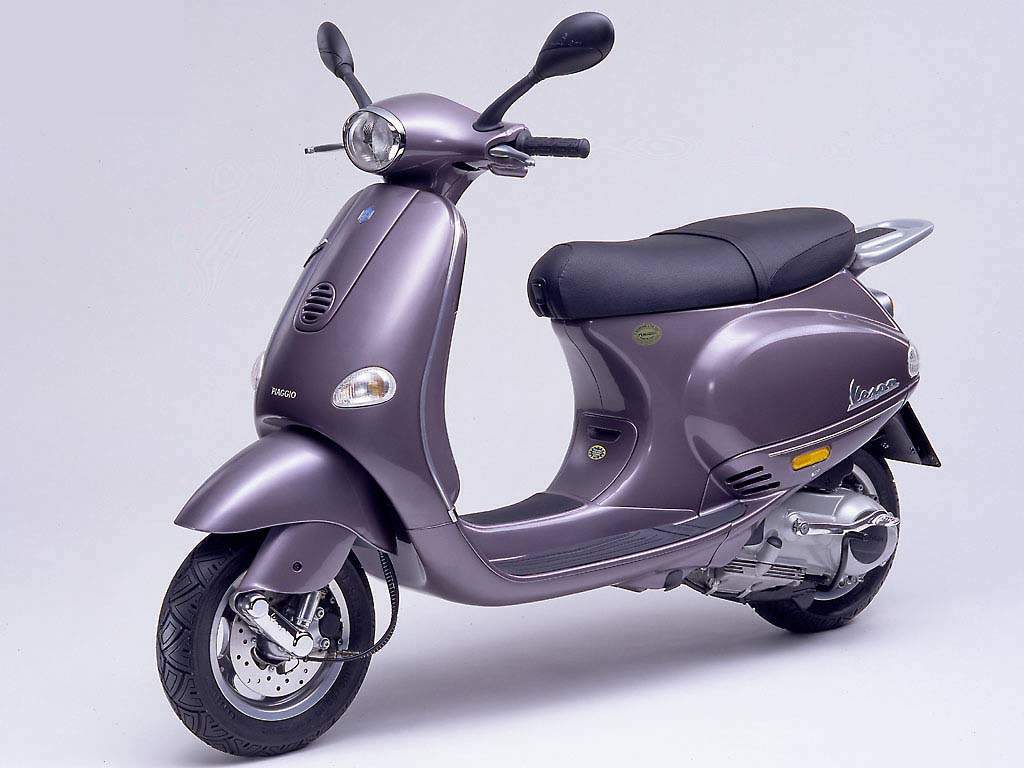
Vespa ET4 150cc, 1999 - First
Piaggio scooter equipped with the new generation 4-stroke Leader engine, now on
the 125cc model too.
Vespa ET4 50cc, 2000 - The first small Vespa with a 4-stroke engine, combining lively performance that will make no one regret the 2-stroke with quiet running and the reduction of polluting emissions. Fuel economy is outstanding: the Vespa ET4 50 has the highest range in the 50 cc class, with approx. 500 km on a full tank.
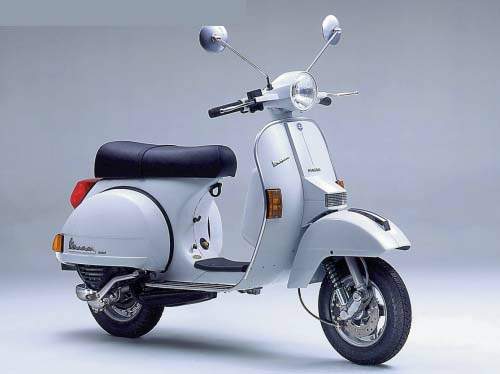
Vespa PX, 2001 - Classic design and unique features such as a four-speed gearbox have made the Vespa PX a cult scooter, a symbol of Italian style everywhere in the world. The 2-stroke 125, 150 and 200cc engines (displacements vary according to markets) with forced air cooling have electronic CDI ignition and electric start with a kick starter. The new PX now sports a powerful stainless steel front disc brake, 200 mm in diameter, guaranteeing prompt, safe and efficient braking. A reliable 150 mm rear drum modulates braking.

Vespa Granturismo 200L and 125L, 2003 - In 2003, the Granturismo made its appearance as the most powerful Vespa ever produced. In 200L and 125L versions, it combines the Vespa's emotional appeal with state-of-the-art technology: this was the first-ever Vespa to have sparkling four-stroke, four-valve, liquid-cooled engines that meet the new Euro2 emissions standards, as well as 12-inch wheels on the 200L and a two-disk brake system. The steel body is a uniquely Vespa touch.
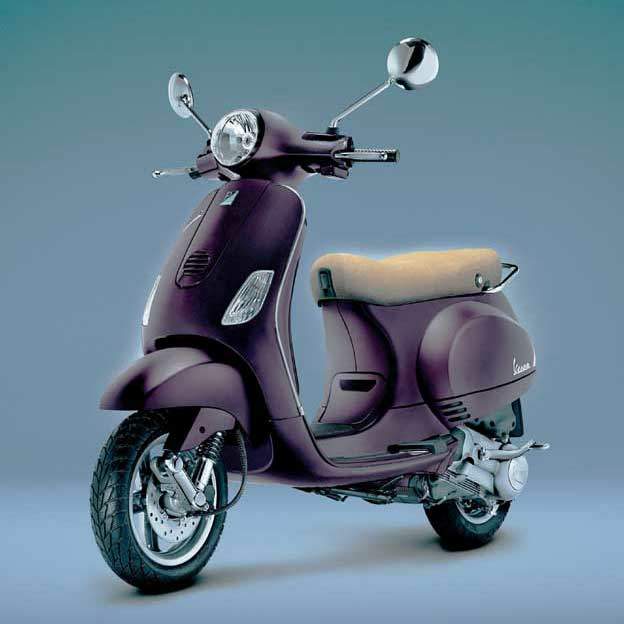
Vespa LX, 2005 - Launched in Rome on 10 May, 2005, the LX is the 139th Vespa in almost 60 years. It is the sublime heir of a truly unique legacy, a designer scooter for those who want a stylish, avant-garde scooter for town use. A "compact" Vespa, the LX replaces the glorious Vespa ET (over 460,000 units sold since 1996). It is available in four modern, environment-friendly displacements: 50cc two and four strokes as well as a 125 and a 150cc four stroke.
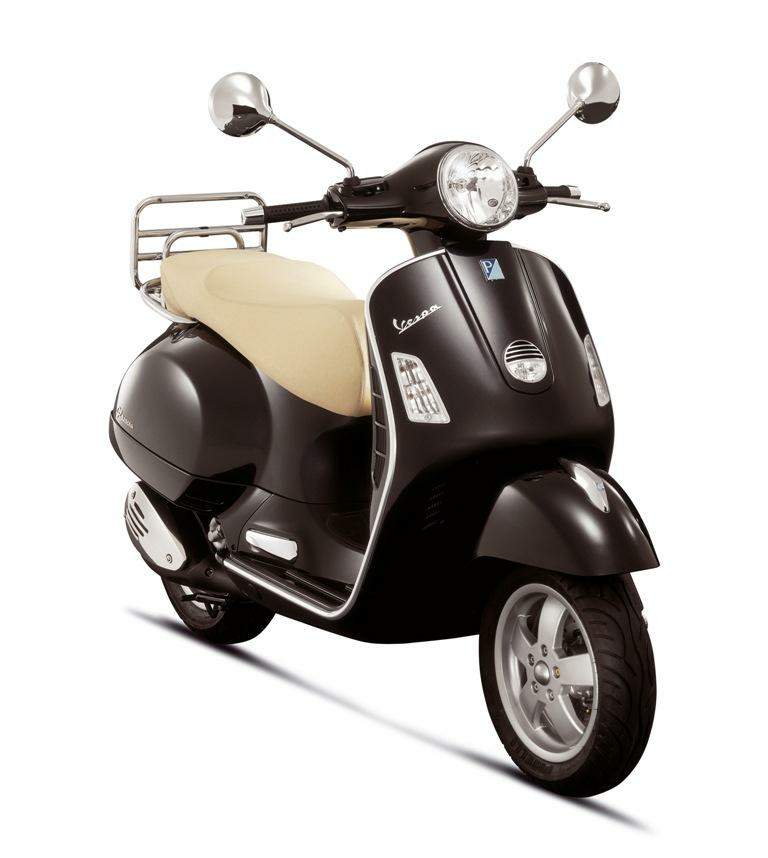
Vespa GTS 250 i.e. - Fifty years
after the launch of the Vespa GS (Gran Sport), the first sport scooter in
history and still a sought-after treasure for collectors and fans, Vespa GTS 250
i.e. - launched on 25 May 2005 in Portofino - renews the GS blend of speed and
style to become the fastest, most powerful and most high-tech Vespa in history.
With an avant-grade, extremely powerful 250cc four-stroke, four-valve electronic
injection engine and two disc brakes with an optional ABS and brake servo, the
Vespa GTS 250 i.e. was one of the first two-wheelers and the first 250cc to
already meet the strict upcoming Euro 3 emissions limits.
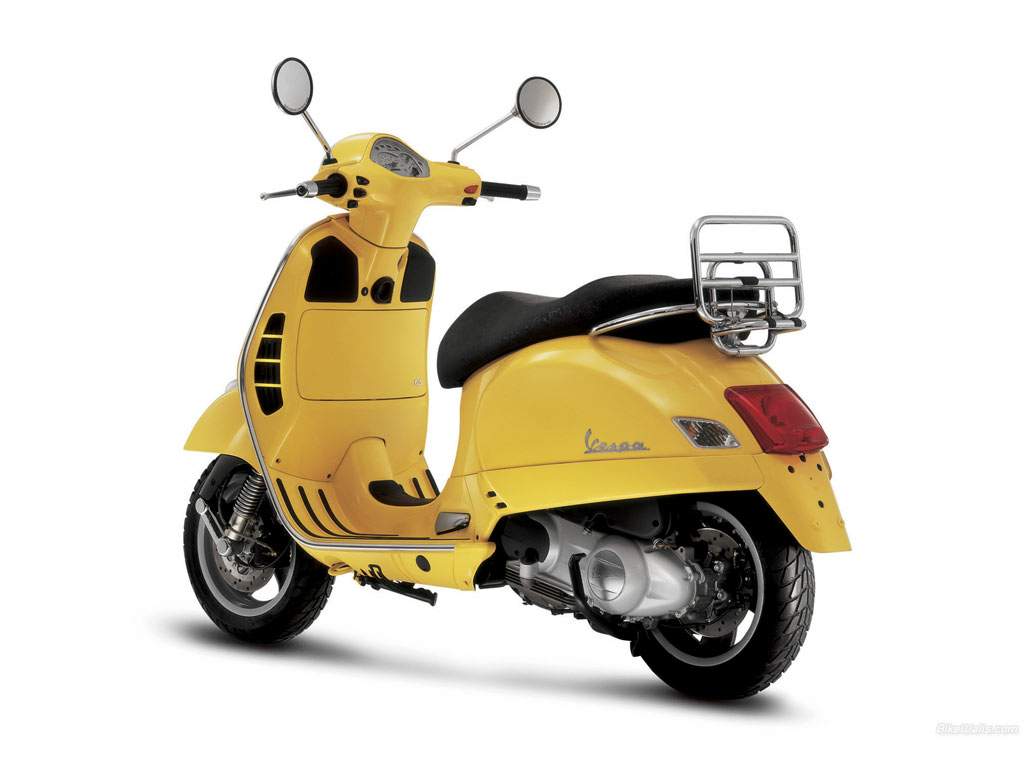
Vespa GTS 125 - As of 2007, the Vespa GTS is also available in a 125 cc version. A perfect combination of elegance and performance, the Vespa GTS 125 offers all the class, exclusivity and high technology of the bigger GT scooter, but with a 125 cc engine.
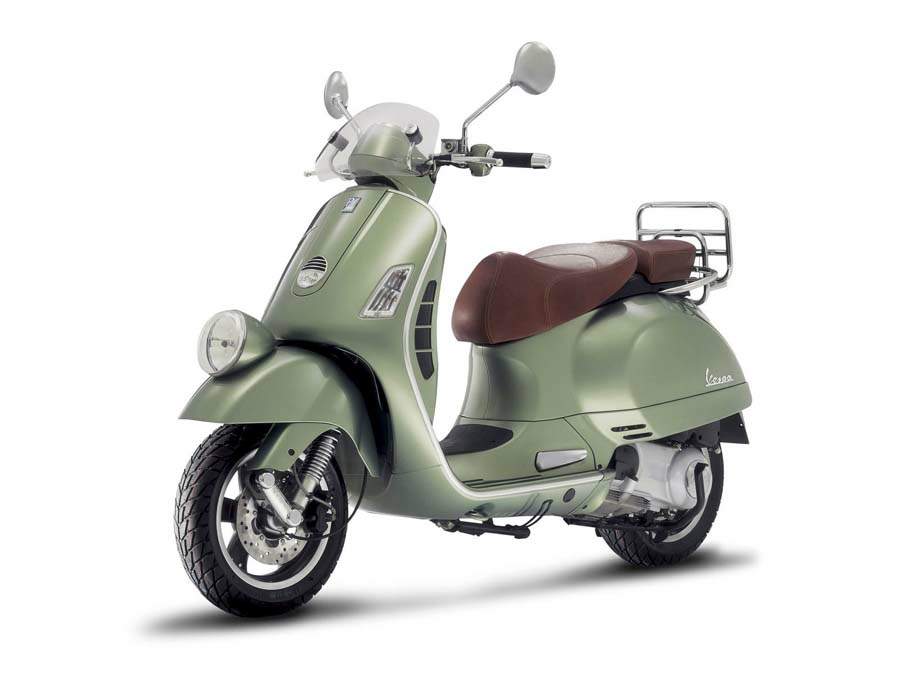
Vespa GTV and LXV, 2006 - Conceived to celebrate an absolute legend in the world of two wheelers, the Vespa LXV and Vespa GTV repeat and re-interpret the most distinctive elements of ‘50s and ‘60s styling in form and function. The Vespa GTV, available with 125 and 250 cc engines, stands out for its headlight mounted on the mudguard just as the original 1946 prototype.
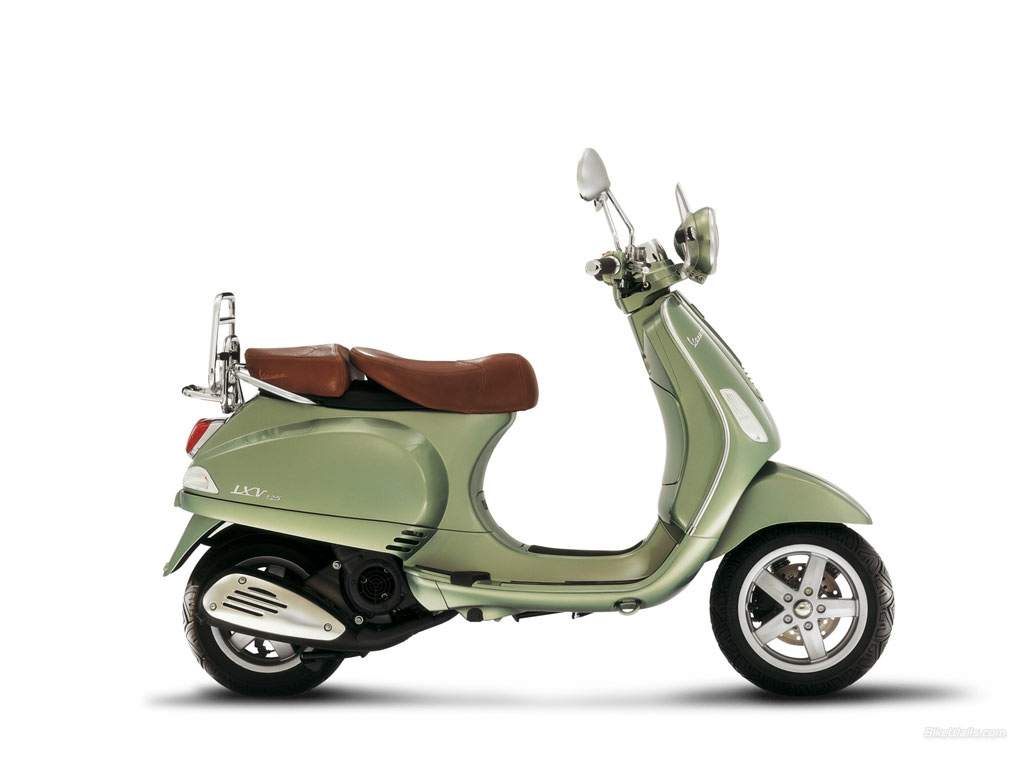
The Vespa LXV, offered with a choice of 50, 125 and 150 cc engines, is inspired by the smooth, essential lines of the Vespas of the 1960s, and features a sleek, minimalist look characterised by open handlebars and a two part seat.

Vespa GT 60cc, 250cc, 2006 - This is the gift that Vespa was determined to give its fans to celebrate the company's sixtieth anniversary. With its prestigious materials and exclusive finish, this unique limited edition is made in a series of only 999 units, and is destined to become one of the milestones in Vespa's long history.

Vespa S 50 and 125, 2007 - All the character of the sporty "Vespino" of yesteryear is revived by the brand new Vespa S. This fascinating blend of styles and memories keeps the soul of the youngest and most sporting of all Vespas alive in the present day. The Vespa S inherits its rigorously minimalist looks from legendary models of the 1970s like the 50 Special and Vespa Primavera.
|
Any corrections or more information on these motorcycles will be kindly appreciated. |